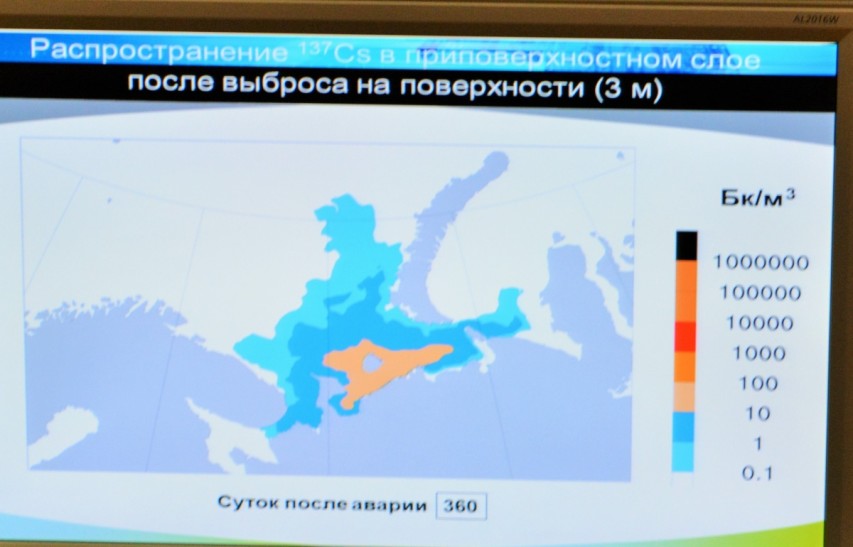The Soviet Union had a remarkably casual approach to disposing of nuclear-powered submarines that were no longer useful in active service:
Russian scientists have made a worst-case scenario map for possible spreading of radionuclides from the wreck of the K-159 nuclear-powered submarine that sank twelve years ago in one of the best fishing areas of the Barents Sea.
Mikhail Kobrinsky with the Nuclear Safety Institute of the Russian Academy of Science says the sunken November-class submarine can’t stay at the seabed. The two reactors contain 800 kilos of spent uranium fuel.
At a recent seminar in Murmansk organized jointly by Russia’s nuclear agency Rosatom and the Norwegian environmental group Bellona, Kobrinsky presented the scenario map most fishermen in the Barents Sea would get nightmares by seeing.The map shows expected spreading of radioactive Cs-137 from potential releases from the K-159 that still lays on the seabed northeast of Murmansk in the Barents Sea.
Some areas could be sealed off for commercial fisheries for up to two years, Mikhail Kobrinsky explained.
Ocean currents would bring the radioactivity eastwards in the Barents Sea towards the inlet to the White Sea in the south and towards the Pechora Sea and Novaya Zemlya in the northeast.




